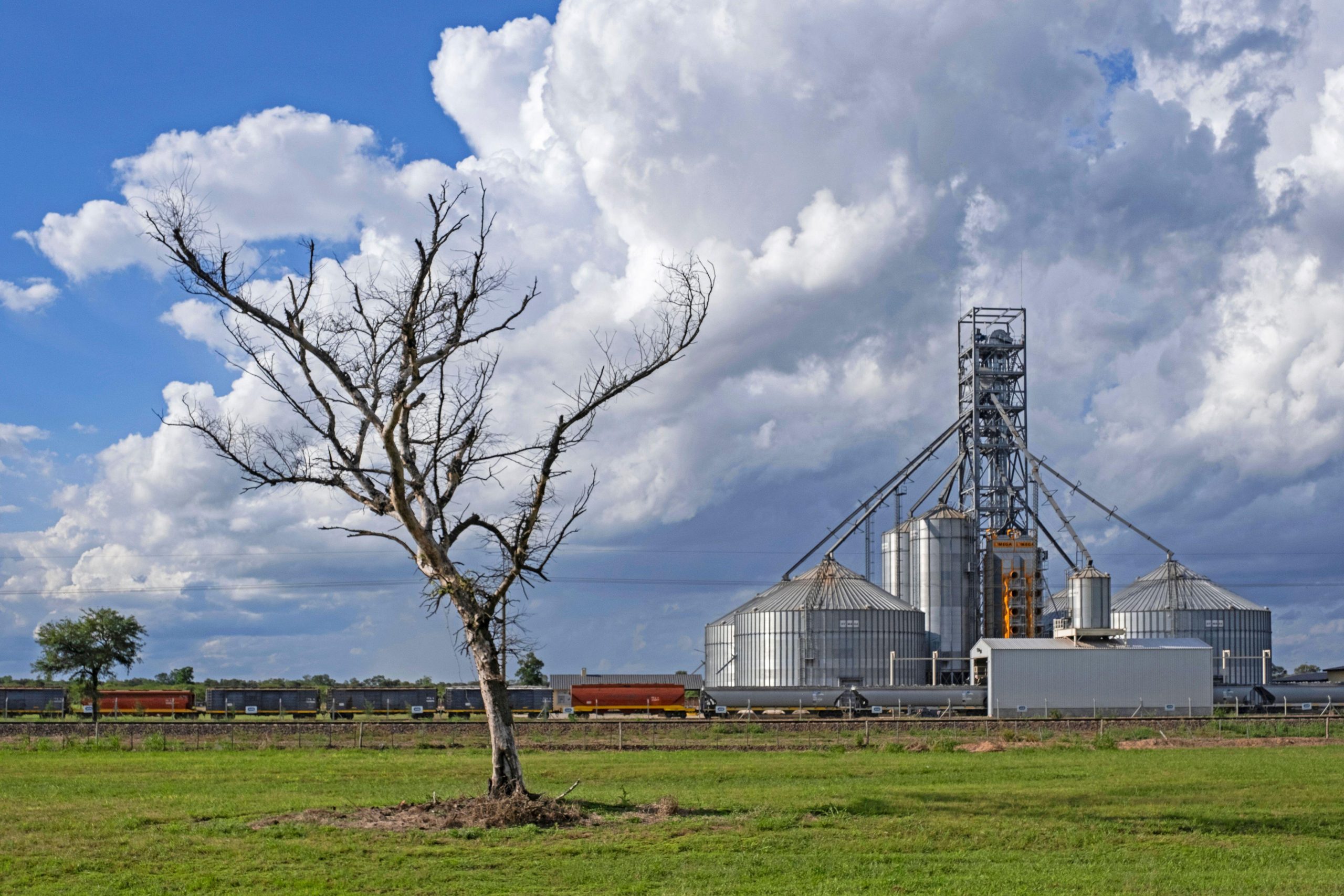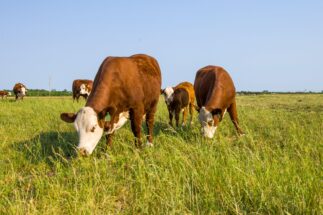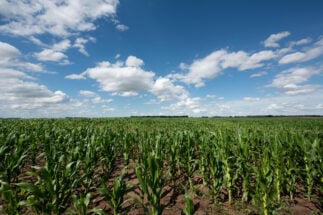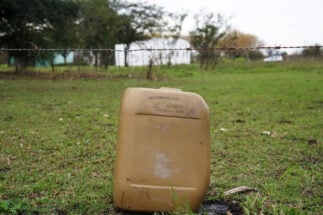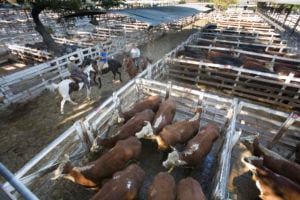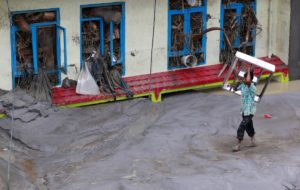Argentina aims to significantly increase production and exports of agricultural products over the next decade, according to a new plan providing incentives for the agribusiness sector.
On 11 November, the Argentine executive branch presented the draft Regime for the Promotion of Federal, Inclusive, Sustainable and Exporting Agroindustrial Development to the Chamber of Deputies. It foresees a set of benefits for agricultural, agroindustrial and forestry investments in Argentina for the next 10 years.
The plan, which will be debated in congress, was created as a result of an agreement between president Alberto Fernández’s government and the main agribusiness leaders. Industry estimates claim that these measures and investments will give a US$7 billion boost to exports and create 150,000 jobs throughout the country. However, environmentalists have expressed concern about the impact it would have on Argentina’s compliance with its emissions reduction targets.
New incentives for Argentina’s agribusiness
To achieve its economic objectives, the promotion plan proposes a set of benefits, including: accelerated return on agribusiness investments by allowing higher tax deductions in the first years; earlier reclaim of the Value Added Tax (VAT); and deferred income tax payments for cattle breeding.
According to the agricultural sector, these incentives and benefits will promote investment in better inputs and technologies, which will then allow agricultural and livestock production to increase.
150,000
jobs will be created nationwide as a result of the plan, according to estimates by the agriculture sector
The project is the result of an agreement between the government and the Argentine Agroindustrial Council (CAA), a coalition of more than 60 institutions linked to the countryside, which aims to “consolidate Argentina as a leader in the international trade in animal and vegetable foods, in animal feed and and as an exporter of agri-food ecosystem technologies,” according to its own definition.
The initiative also has the support of the main opposition parties and, if approved, is expected to provide a framework of stability to the sector, benefitting small, medium and large companies and producers throughout the country. Agriculture is responsible for 7 out of every 10 dollars (US$) that enter the country through exports.
Crops account for two thirds of Argentina’s total agricultural production, with around 100 million tonnes a year destined for foreign trade (mainly soy, maize, wheat and sunflower), while meat and dairy farming make up the remaining third. In the first six months of 2021, the sector’s share of the nation’s total exports reached 67%, and represented a total income of around US$24 billion.
Welcomed by agribusiness
“We believe that this promotion scheme will allow the purchase of more machinery and equipment, more fertilisers and more seeds with better genetics, and all of this will lead to greater production with a lower tax burden,” said Julio Calzada, director of economic studies at the Rosario Stock Exchange.
Elbio Laucirica, acting president of Coninagro, an organisation that brings together cooperatives in the agricultural sector, believes that the law, if passed, “will place Argentina in much more advantageous conditions and in a privileged position in the world, not only in the generation of foreign currency, but also in the generation of employment throughout the country, with a good impact on regional economies”.
Alfredo Paseyro, executive director of the Argentine Seedbeds Association (ASA), said that the initiative “does not solve all the problems of the agro-industry, but the outlook of the project is positive, as it encourages productive agroindustrial investment with different incentives”.
The initial objective of the CAA was much more ambitious than the government’s initial proposal, Paseyro said, but “we had to seek points of agreement”. Two of the issues that were left out were the reduction or removal of export duties, and an improvement in exchange rates.
Paseyro hopes that the proposal will be dealt with in congress “as soon as possible” and is confident that the project can be improved during parliamentary debate “without this meaning modifying what was agreed with the government”.
Sustainable agriculture?
Although the plan has “sustainable” in the title, some have questioned it in the context of the climate crisis. Agriculture, livestock, forestry and other land uses together account for 37% of Argentina’s greenhouse gas emissions, according to the latest official inventory.
In its nationally determined contribution (NDC) to the Paris Agreement, Argentina pledged not to exceed net emissions of 349 megatonnes of carbon dioxide by 2030, which represents a total cut of 19% of emissions from the historical peak reached in 2007.
Argentina has also committed to achieving an emissions-neutral economy by 2050. In fact, the government was scheduled to present its plan to achieve this goal at the recent COP26 climate change conference, but did not do so, following pushback from the agribusiness sector against more ambitious targets in the days before the summit began.
The planned increase in production “is in clear opposition to Argentina’s goal of carbon neutrality by 2050”, civil society organisation Fundación Ambiente y Recursos Naturales (FARN) said in a statement.
María Marta Di Paola, FARN’s director of research, said the government’s proposal “represents a deepening of the agroindustrial model and its environmental impacts”.
“In this context [of climate change] agribusiness is a victim, because it suffers the ravages of droughts and floods, and it is a victimiser, because it is the second largest sector in the national matrix of greenhouse gas emissions,” she said.
For Di Paola, “we have to revise this model as we know it, which sees the advance of agricultural frontiers over native forests, which sequester carbon, and the advance over wetlands.”
Forests, as well as wetlands, are important reservoirs of carbon dioxide, the main gas that causes global warming. Globally, it is estimated that about 20% of global emissions originate from deforestation. Between 1998 and 2018, 5.8 million hectares were deforested in Argentina.
“In addition, the socio-environmental impacts of agrochemical use on human health, water courses and soil quality need to be reviewed,” Di Paola adds. In Argentina, around 500 million litres of pesticides and herbicides are used every year, according to estimates by the NGO Naturaleza de Derechos.
FARN believes that the bill should be submitted to a process of public participation in which the different actors can express their concerns about its environmental implications.
“We believe it is essential to [instead] promote agroecology, which can mitigate the environmental impacts of the agroindustrial model,” Di Paola concluded.
We have to revise this model as we know it, which sees the advance of agricultural frontiers over native forests, which sequester carbon, and the advance over wetlands
Agroecology promotes agricultural production that conserves the basic natural resources for food production, such as soil, water and biodiversity. In Argentina, it is promoted by various organisations, such as the Unión de Trabajadores de la Tierra (UTT), which brings together some 22,000 food-producing family farms in 18 provinces.
For Agustín Suárez, spokesperson for UTT, the government’s new agroindustrial plan “continues to deepen the agro-export model and the lobby of monopolistic companies”. Suárez also proposed an expansion of agroecology and called for a new framework for land use planning in the agricultural sector.
“It is a promotion of intensive farming, with greater use of transgenic [genetically modified] seeds and agrochemicals, and the expansion of the agricultural frontier at the expense of forests and entire communities – just as they have been doing for four decades,” Suárez says. “Everything is a loss for the Argentinian people.”
The outlook for Argentina’s agribusiness
Elbio Laucirica, from Coninagro, stated that in order to increase agroindustrial production, it is not necessarily essential to increase the surface area of farms, but rather to “invest in technology”, and that this new official initiative facilitates such investment.
He also explained the concept of “sustainable” as it is interpreted in the proposal, with social, economic and environmental variables: “The social aspect involves promoting the rootedness of the land, and providing the services needed by producers in rural areas. The economic aspect has to do with generating income to produce investments. And from the environmental point of view, Argentina is at the forefront with no-till farming, saving water, fossil fuel use and carbon emissions.”
Meanwhile, Julio Calzada, from the Rosario Stock Exchange, stressed that the agro-industrial sector is actively involved in reducing and mitigating its greenhouse gas emissions.
Calzada highlighted two programmes: The Argentine Carbon Neutral Programme, which calculates the carbon footprint of each sector and certifies the carbon balance of export products; and the Visión Sectorial del Gran Chaco (VISEC) programme, which aims to reduce deforestation in the Gran Chaco with certifications of “deforestation-free” products for international markets.
Alfredo Paseyro, from the ASA, said that the sector is “committed to sustainability, with good practices and complying with international standards and the demands of buyers, who set their own conditions and environmental standards”.
“In the countryside we always say that we are borrowing the land that we have to leave to our children, and that is a responsibility that goes beyond any manual of good environmental practices,” concluded Paseyro.
For Laucirica, the sector faces great challenges: “We have to raise producer awareness, train producers and their staff in technologies and control. We need the state to carry out the necessary controls and to certify us, so that society is convinced that we are doing things right.”
